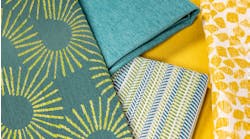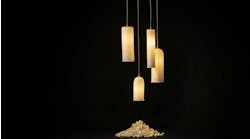Turkish furniture manufacturer Koleksiyon has aimed its focus on empowering the user for quite some time, thanks to Design and Brand Director Koray Malhan. His “Self-Organized Workplace” concept driving his designs has resulted in products that put the power of configuration in the hands of the designer and their clients, and has been inspired by trailblazers—just a few of which are introduced below—in a variety of fields from music to philosophy. Malhan has looked to each of these figures as muses over the years, as they have promoted a similar freedom of thought in their studies. Read on to find out which Koleksiyon releases each has inspired.
Gordon Matta-Clark (1943-1978): Borges (2014)
The Borges workstation is a direct result of Malhan’s study of American artist Gordon Matta-Clark, who practiced what he called “Anarchitecture,” a rejection of traditional architecture. Famous for his “building cuts,” he reconceptualized preconceived roles of everything, including people. Borges utilizes a shelf as its main axis, rather than the traditional table or worksurface. It can then transform with attachments, such as a hood for concentration or mini worktops for tablets. All of which can slide along the central beam or “shelf” and shift without the use of any tools.
Astor Piazzolla (1921-1992): Oblivion (2014)
Argentinian composer Astor Piazzolla and his “nuevo tango” led to Koleksiyon’s Oblivion workspace partition. Just as Piazzolla added layers of jazz to reinterpret the traditional tango, creating a sound all his own, Oblivion is built in collaboration with the customer, layer upon layer. Each unit is customized from the inside out, as Koleksiyon works with the architect and end user to determine everything from floor diameter to the outer surface covering.
Yves Klein (1928-1962): Solis (2016)
The Solis modular system was inspired by the work of French artist Yves Klein. Solis is a soft seating option that comes in a variety of models, with or without a backrest, and optional indentations that allow the pieces to nest together in various compositions. This variety of options was likened to Klein’s photo montage, “Leap into the Void,” which depicts him jumping out of a second-floor window, representing a state of mind devoid of outside influences. This leads to a purely neutral mind, in which a person can be inspired to pay attention to their own sensibilities.
Pierre Boulez (1925-2016): Tube (2016)
French composer Pierre Boulez proposed the concept of “permanent revolution”—the idea that there is no finality to thought, interpretations, or creation. “Koleksiyon’s concepts and designs behave similarly, as do we as designers,” Malhan explained. “We don’t view the furnishing as having a stopping point after manufacture. Each piece can be changed, it can be reinterpreted, and it can, as a result, facilitate conversation of this nature.” Tube is a perfect example of this notion, created by the organic act of stacking various tubes on top of one another to create an ever-changing system that works for the user’s individual needs.
Umberto Eco (1932-2016): Calder (2016)
Italy’s contemporary thinker Umberto Eco developed an important approach in semiotics (the interdisciplinary study of linguistics, phonetics, architecture, sociology, and psychoanalysis). While studying avant-garde artwork, Eco described the theory as an open system, where the experience of the work is flexible and constantly renewable. Malhan applies this same theory to product design, allowing him to challenge the concept of structure. Eco helped inspire Koleksiyon’s Calder, which provides endless arrangements with four different pouf units and one aluminum tray. The units can be connected in various ways and a socket set can be disguised when not in use.
Photography courtesy of Koleksiyon



